June 20 (Lunar calendar: May 3), 2023 Tuesday | Dawnxisoul393art
Today, our family went to the Wong Tai Sin Temple in Hong Kong to pay homage to the God of Wong Tai Sin and to sketch and paint. Hong Kong Wong Tai Sin Temple, fully known as Chisong Wong Tai Sin Temple or SISE garden Wong Tai Sin Temple, is a famous temple in Hong Kong. It is located in East Kowloon and covers an area of about 18000 square meters, it is managed by a non-profit charity in Hong Kong. It was identified as a first-class historical building in Hong Kong in May 2010. In addition to the main hall, there is also the "Three Holy Halls", the "Heart-warming Garden" and the "Nine Dragon Walls", each with its own architectural characteristics. The memorial archway in the temple also fully reflects the traditional culture. The buildings in the temple are built according to the attributes of a left dragon, right Phoenix, and five elements, making the whole building group more distinctive. The appearance of red columns, golden tops, blue lintels, and yellow grids in the main hall of Wong Tai Sin Temple can be regarded as a typical example of traditional temple architecture. The central part of the main altar is dedicated to the portrait of Wong Tai Sin and is also dedicated to the god of protection, Qi Tian Da Sheng. Behind the main altar is a wood carving, which describes the deeds of Wong Tai Sin in becoming immortal.
Illustrated by dawnxisoul393
The walls of the hall are also equipped with woodcut scriptures and pictures of Confucianism, Buddhism, and Taoism, which are rich in meaning. The three holy halls next to the main hall are dedicated to Lu Zu's ancestors, Guanyin Bodhisattva and Guan Shengdi. LV Zu (i.e. LV Dongbin) is a Taoist immortal, Guanyin is a Buddhist Bodhisattva, Lin Pavilion is dedicated to Confucian guru Confucius, and Yu Xiang Pavilion is dedicated to Buddhist lantern Buddha. It is said that the confluence of the three religions is a major feature of Wong Tai Sin Temple in Hong Kong. The nine dragon wall in the temple was imitated according to the nine dragon walls in Beihai Park in Beijing in 1981. The stone-carved nine dragons, playing beads in waves and clouds, and lying on the garden are lifelike. The stone wall has a dragon on the left and a phoenix on the right. The Fengming building, which echoes with the nine dragon walls, is located on the far right of the whole building group. The Fengming building is two floors high, the administrative conference room and activity hall, with Chinese palace design and green glazed tiles on the roof, are unique.
Illustrated by dawnxisoul393
"Cong Xin(Heart) Garden" was built in 1991 to celebrate the 70th anniversary of the establishment of the temple. It was named after Confucius said "70 and follow your heart". The promenade in the garden is built with reference to the Beijing Summer Palace promenade. There are also two small bridges, waterside pavilions, waterfalls and artificial lakes, and various small pavilions, such as square pavilions, round pavilions, octagonal pavilions, and fan pavilions. The architectural groups representing the attributes of the five elements are respectively the "gold" shape of feiluan platform, the "wood" shape of the Sutra hall, the "water" shape of the Yuye pool, the "fire" shape of Yuxiang Pavilion, and the "Earth" shape of the screen wall. It is said that Taoist monks and immortals show that the buildings must cooperate with the five elements before the temple can last forever. It is said that the Taoist priest received advice from the immortal master that the building should match the five elements in order for the temple to last forever. The most representative religious folk custom in Hong Kong, "Wong Tai Sin belief", was successfully listed in the fourth batch of national intangible cultural heritage projects in 2014. The average daily number of visitors to Wong Tai Sin Temple is about 10000. More than 100000 people come to worship on Chinese New Year's Eve every year, which plays an important role in the hearts of Hong Kong people.
It is also rumored that during SARS in 2003, no one was infected in the area near Wong Tai Sin. Let's not discuss how magical the Wong Tai Sin Temple is, but as a folk belief in Hong Kong, it is amazing that "Wong Tai Sin Beliefs and Customs" can enter the national intangible cultural heritage list. In fact, Wong Tai Sin has gone beyond religious belief itself to become a believer in the hearts of Hong Kong people and has brought blessings to Hong Kong people for more than 100 years. In 1897, Liang Renan, the founder of Hong Kong Wong Tai Sin Temple, was taught by Huang Chuping (Wong Tai Sin) to "give alms and persuade goodness", he became a believer in Wong Tai Sin, took Wong Tai Sin as an immortal teacher, became a Taoist priest, and was given the Taoist name "preaching". In 1915, the father and son of Taoist priest Liang Renan brought the portrait of Wong Tai Sin to Hong Kong, and founded Puyi Altar in Zhuyuan village, Kowloon in 1921. Since then, the belief in Wong Tai Sin has flourished in Hong Kong and even spread to Southeast Asia, the United States, and Canada.
Illustrated by dawnxisoul393
Liang Renan opened an altar to preach in Hong Kong, set up an altar in the east of Wanchai avenue to worship Wong Tai Sin, and opened a drugstore. Two years later, the place was destroyed by fire, and he moved the altar to the east of the Wanchai waterfront. Then, in 1921, Wong Tai Sin issued instructions to the then Taoist Liang Renan to build a temple near Kowloon City. The Taoists came to a mountain near Zhuyuan village and saw the beautiful scenery. They then asked Wong Tai Sin for instructions. Instruction from Wong Tai Sin: This is an auspicious place for the Phoenix to spread its wings. It is suitable for setting up an altar to explain the teachings of Taoism. Therefore, they decided to build a temple at the current site and put it into operation in July of the same year. At the beginning of the completion of Wong Tai Sin Temple, it was originally a private Dojo, and the temple was not open to the public due to the restrictions of temple regulations and land leases at that time. Later, at the request of the "Chinese Temple Committee" at that time, the government agreed to open the temple on the first day of the first month of each year for worshippers to worship Wong Tai Sin. It was not until August 21, 1956, that the Wong Tai Sin Temple was officially approved by the government to be fully opened to people.
In April 2008, the park announced that it would spend HK $140 million to carry out a large-scale expansion project, including renovating the hall dedicated to master Wong Tai Sin, reorganizing the Shenshen platform in front of the hall, and building an underground palace "Yuanchen hall" dedicated to Tai Sui at the bottom of the hall The whole hall is divided into the front hall and the main hall. The overall design integrates traditional Taoism and modern colors. Wong Tai Sin culture is a very dynamic branch of Chinese Taoist culture. It has been introduced into Hong Kong and gradually spread to Southeast Asia, Europe, and the United States. It has a great influence. More than 30 overseas Wong Tai Sin Taoist temples in Hong Kong, Macao, New York, Ottawa, and Sydney have been full of incense and believers In the eyes of Hong Kong people, Wong Tai Sin is the God of wealth and protection, and a Wenchang king who dominates the fate of scholars. Millions of Hong Kong people have worshipped Wong Tai Sin for nearly a century in order to pray for good fortune, eliminate disasters and avoid disasters, prosper businesses and enjoy family happiness.
Illustrated by dawnxisoul393
Many overseas Chinese believe in Wong Tai Sin because, for them, Wong Tai Sin's belief is a kind of spiritual sustenance. In their early years, the Chinese went abroad and felt a sense of loneliness of "being a stranger in a foreign land alone". Wong Tai Sin's belief made them find a spiritual destination. The essence of Wong Tai Sin culture includes "sincerity, respect, wisdom, benevolence, courage, filial piety, fraternity, loyalty, and faith". It advocates The concept of "responsibility before rights, group before individuals, harmony above conflict" has become a cultural link between the mainland and Hong Kong, Macao, Taiwan, and overseas Chinese. However, the Wong Tai Sin Temple in Hong Kong is not always "responsive" to every request. Wong Tai Sin's "responsive" is in line with the principle of "universal aid and benevolence", which is also the purpose of the Wong Tai Sin Temple. If worshipers want to be rich and prominent, most of them will It is the ultimate goal of Wong Tai Sin's "manifestation" to "persuade the good". The printing of good books has become an important task for Taoists. For example, Wong Tai Sin Temple has a long history and wide influence.
Wong Tai Sin Temple is not a pure Taoist place. At the same time, it enshrines the sages of Buddhism and Confucianism for people to pay homage. The essence of Confucianism, Buddhism, and Taoism, which contains the ideas of "blessing comes from good life" and "good heart and good deeds will get good results", even if it breaks away from the level of faith, it is also in line with the laws of social development. Wong Tai Sin's "universal aid and good advice" The good work of Wong Tai Sin Temple has never stopped. Even in the years of the fall of Hong Kong, it has shared the hardships with the people of Hong Kong, and the residents have flocked to Si se garden to avoid disasters.
(Original by dawnxisoul393, )






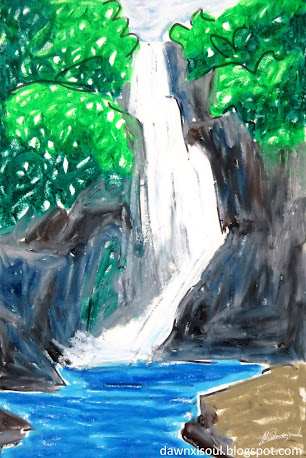
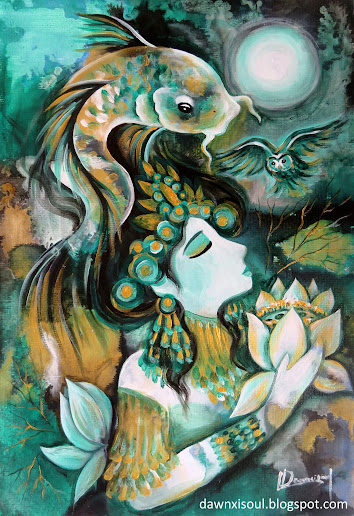

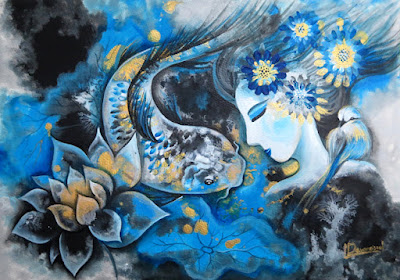
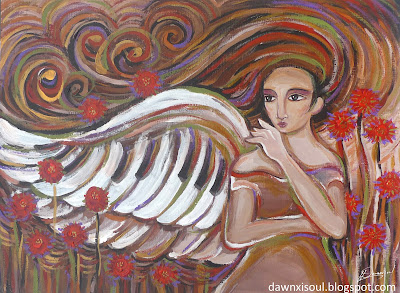



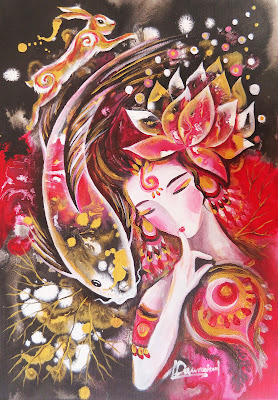
Comments
Post a Comment